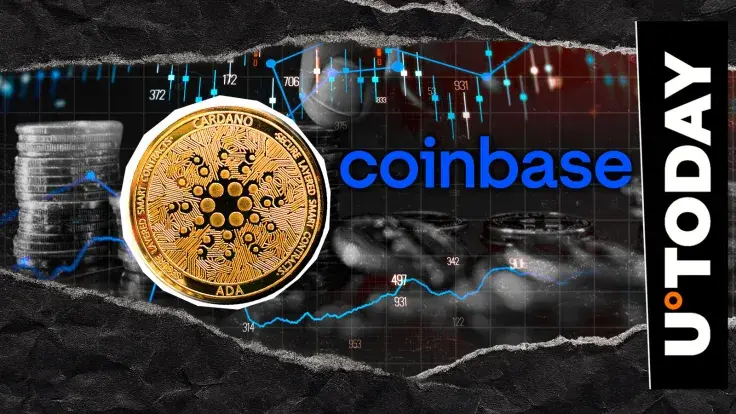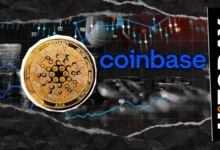Cardano: The Complete Guide to the Future of Blockchain

Cardano is one of the most ambitious and academically grounded blockchain platforms in existence. It was launched to address key pain points of earlier blockchains — scalability, interoperability, sustainability — with a focus on formal verification and peer-reviewed research. While the crypto world is full of projects promising to be “the future,” Cardano has managed to stand out by combining a careful, scientifically rigorous development process with real-world partnerships and a growing ecosystem of decentralised applications.
Unlike many blockchain projects that evolve quickly but chaotically, Cardano’s development follows a clear roadmap. It is often called a third-generation blockchain because it aims to improve upon Bitcoin’s security and Ethereum’s programmability while solving the scalability and governance problems that plague both. Its native token, ADA, is used for staking, paying transaction fees, and participating in governance decisions. With a supply capped at roughly 45 billion ADA, it appeals both to investors and those who care about the economics of scarcity.
Understanding Cardano’s Foundations
Cardano was co-founded by Charles Hoskinson, one of Ethereum’s original co-founders, along with Jeremy Wood. Together, they established Input Output Global (IOG), which leads Cardano’s research and engineering efforts. Cardano is not controlled by a single company. Instead, its ecosystem is supported by three organisations:
- IOG (Input Output Global): Focused on engineering and research.
- Cardano Foundation: Promotes adoption, education, and regulatory outreach.
- Emurgo: Handles commercial partnerships and enterprise integrations.
This division of responsibility is unique compared to many blockchain projects and is designed to avoid centralisation of power. It also means can it operate more like a public good, with community input shaping its direction.
The project is built on the philosophy of “high assurance code,” meaning its features are implemented with formal mathematical methods and peer-reviewed research before being deployed. This scientific rigour appeals to those who value security, predictability, and long-term stability over quick but risky experimentation.
Cardano’s Technical Architecture
Cardano’s technical design is one of its strongest points. It uses a layered architecture consisting of:
- Settlement Layer (CSL): This is where ADA transactions are processed. It ensures fast and secure transfers of value.
- Computation Layer (CCL): This is where smart contracts and decentralised applications run, separated from the settlement layer to allow upgrades without disrupting core transactions.
Its consensus mechanism, Ouroboros, is a proof-of-stake protocol that is not just energy-efficient but also provably secure. Ouroboros divides time into “epochs” and “slots,” selecting validators (called stake pool operators) to produce blocks. This allows the network to remain decentralised while reducing energy consumption compared to proof-of-work systems like Bitcoin.
Another key innovation is the Extended UTXO (eUTXO) model, which improves upon Bitcoin’s UTXO model by allowing predictable execution of smart contracts. This ensures that transactions are more reliable and less prone to resource contention issues that plague other networks.
Roadmap and Development Phases
Cardano’s development follows a clearly defined roadmap, divided into five major eras:
- Byron: Laid the foundation, launched ADA, and established the first version of the blockchain.
- Shelley: Introduced decentralisation, staking, and stake pool operations.
- Goguen: Brought smart contracts and multi-asset support, enabling DeFi and NFTs.
- Basho: Focused on scalability, sidechains, and performance improvements.
- Voltaire: The governance era, bringing full community control with voting and a treasury system.
The upcoming Leios upgrade is a major scalability enhancement aimed at boosting throughput using parallel processing and an advanced block production model. Combined with ongoing improvements in interoperability and developer tools, this will help Cardano support mass adoption.
Ecosystem Growth and Use Cases
Cardano’s ecosystem is rapidly expanding, with thousands of projects being developed, including DeFi platforms, NFT marketplaces, decentralised identity systems, and educational applications.
Some prominent examples include:
- DeFi: Protocols like Minswap and Indigo offer decentralised trading, lending, and synthetic asset creation.
- Stablecoins: Djed, an overcollateralized algorithmic stablecoin, brings stability to Cardano’s DeFi landscape.
- NFTs: Cardano hosts an active NFT community with marketplaces like JPG Store.
- Enterprise Solutions: Cardano has partnered with the Ethiopian government to develop a blockchain-based student credentialing system.
This diversity of applications demonstrates is potential to become a foundational platform for the next generation of Web3 innovations.
Strengths and Opportunities
The strongest qualities include its energy-efficient proof-of-stake consensus, scientific development process, and modular architecture. It has one of the most engaged staking communities in the crypto world, with over a million wallets participating in securing the network.
The platform’s focus on governance, through on-chain voting and treasury management, ensures it will evolve based on community needs rather than being driven by a single entity. This makes is well-suited for building public infrastructure applications, from identity systems to global financial tools.
Risks and Challenges
Despite its strengths, its faces challenges. Its development pace, while deliberate, has sometimes been criticised as slow compared to competitors like Solana or Ethereum. The ecosystem, though growing, still competes for liquidity and developer attention in a crowded market.
Scalability is another key test. While upgrades like Leios aim to improve performance, real-world adoption will require sustained throughput under heavy demand. Additionally, regulatory developments in major markets like the U.S. and EU could impact staking rewards, token classification, and DeFi operations.
Quotes From the Community
“Cardano’s focus on peer-reviewed research and formal verification makes it one of the most robust blockchains out there.”
“The Leios upgrade could be a game-changer if it delivers on its promise of massive throughput without sacrificing decentralisation.”
These statements reflect both optimism and cautious expectation — a healthy mix for a maturing ecosystem.
FAQs
Q: What is Cardano used for?
A: Cardano is used for secure transactions, running smart contracts, decentralised finance, NFTs, identity management, and governance.
Q: How does staking work on Cardano?
A: Users delegate ADA to stake pools, which validate blocks. In return, delegators earn ADA rewards proportionate to their stake.
Q: Why is Cardano considered energy-efficient?
A: Its Ouroboros proof-of-stake protocol uses far less energy than proof-of-work mining, making it environmentally friendly.
Q: Is Cardano better than Ethereum?
A: Cardano offers formal verification, lower fees, and high energy efficiency, but Ethereum has a larger developer community and network effect.
Q: Can I build dApps on Cardano?
A: Yes. Developers can use Plutus, Marlowe, or Aiken to create smart contracts and decentralised applications.
